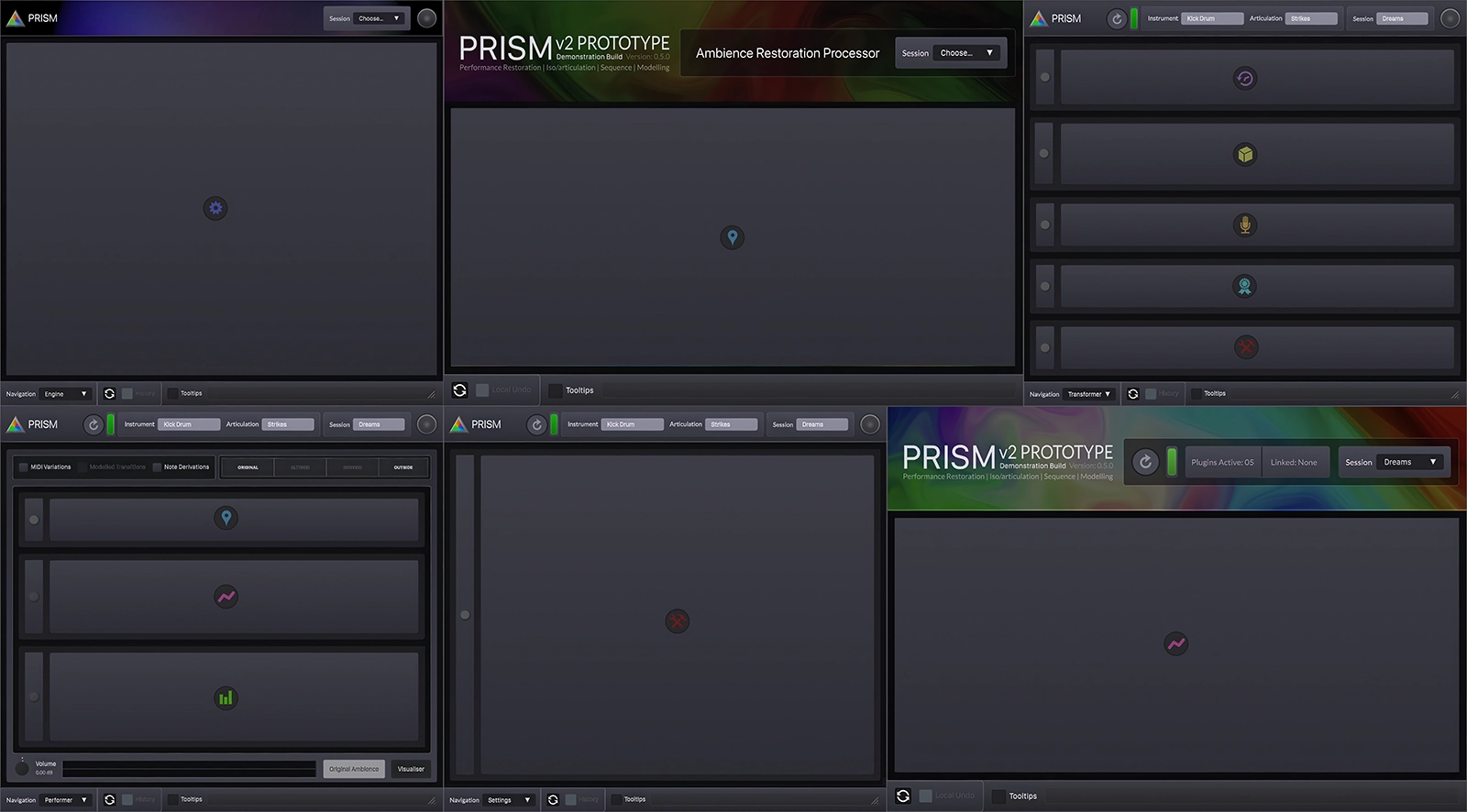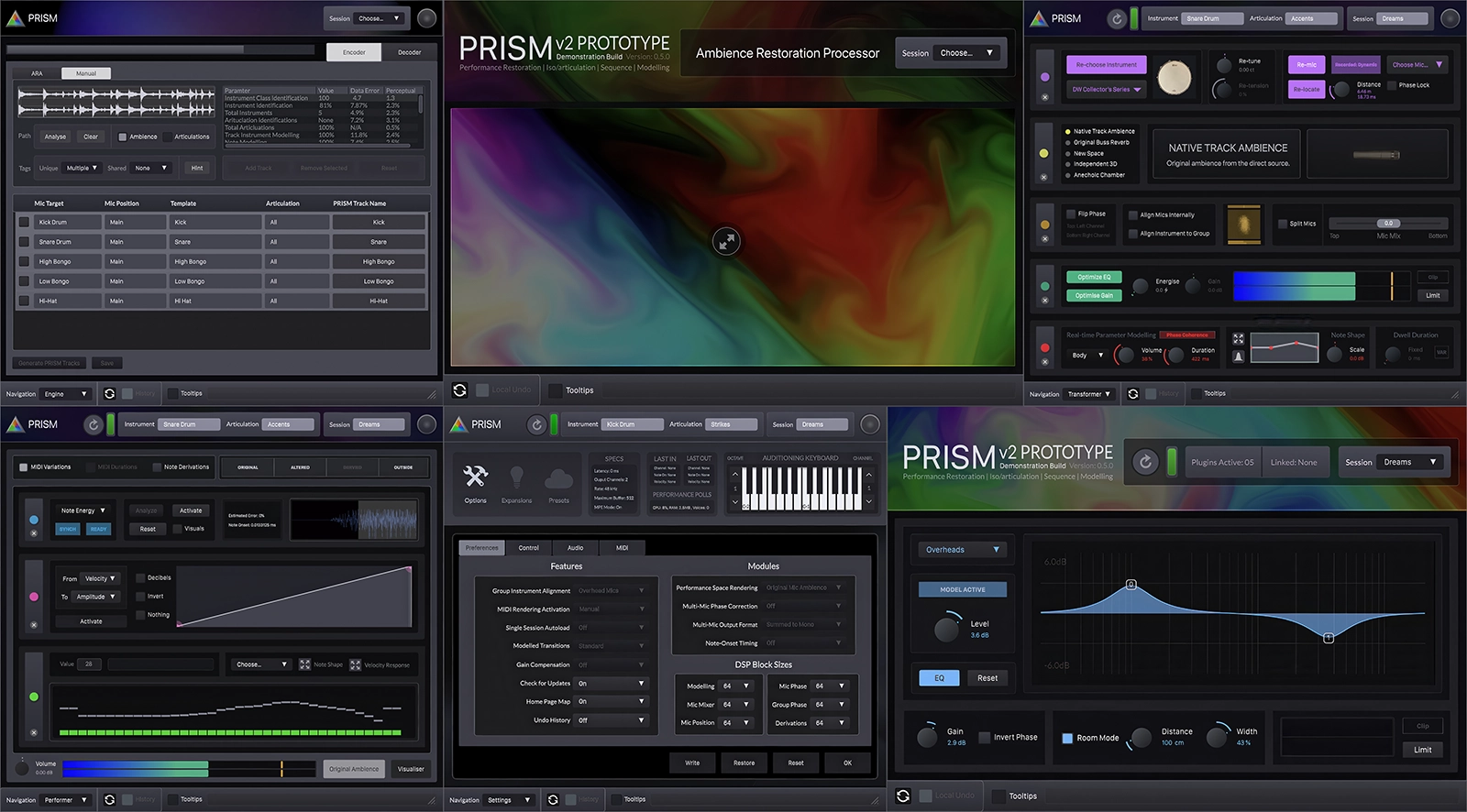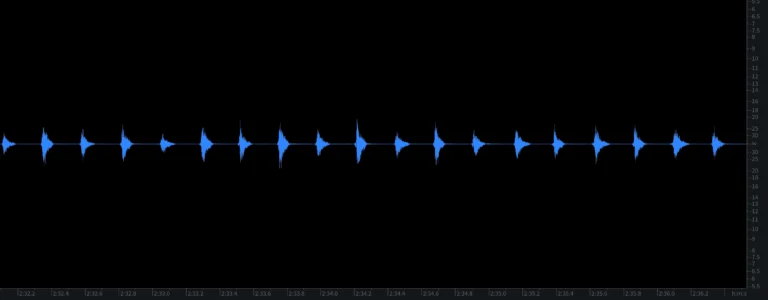Plug-in Play
PRISM 2 introduced a suite of six Instrument and Effect plugins that integrate tightly into DAW. They transform DAWs’ fundamental paradigms by recontextualising their existing functionality. Yet the plugins also maintain full compatibility with existing DAW practice—operations, workflows, audio plugins, mixing techniques and other production elements. In many domains, PRISM elevates and enhances them, easing and solving longstanding problems.


Better Living Through Alchemy


The foot-chics on a hi-hat’s microphone track are inaudible due to bleed. PRISM reveals them pristinely with Archetype audio.




Natural & Artificial Flavors
In traditional DAW use, there isn’t necessarily a structure, theme or metaphor for workflows. It can be argued there is simply a conglomeration of tools, menus and options. To improve results and achieve new outcomes, you add more tools. Power and efficacy are correlated with complexity and entropy, and affordances are based on skeumorphisms without real-world counterparts.



While PRISM supports existing DAW processes, its Virtual Audio Workstation methodology builds workflows based on human experience. Users can import existing skills in other domains. One example is informed by the cognitive duality of how we perceive sound modification: changes in the physical world, and artificial (digital) constructs. Each approach brings with it a highly-developed set of abilities and affordances that can then be applied intuitively.
Reality
Traditional sound mixing can be characterised as changing how something sounds—after it already happened. It’s like putting a ship back into the bottle. This process is difficult and unintuitive, requiring significant skill and a range of audio tools.


PRISM‘s Transformer lets users change the initial conditions of a recording—so it sounded right when it was recorded. These are physical phenomenon, already deeply embedded in human cognition.
Virtuality
PRISM can also create audio transformations that, while impossible in the real world, provide optimised solutions for sound engineering. In drum mixing, compressors and transient designers may increase a tom’s duration, and decrease its attack.
In this video, PRISM demonstrates superior solutions by stretched recorded toms directly as MIDI notes. And other PRISM features—such as an independent, per-note envelopes—are applied.
Reality
Traditional sound mixing can be characterised as changing how something sounds—after it already happened. It’s like putting a ship back into the bottle. This process is difficult and unintuitive, requiring significant skill and a range of audio tools.


PRISM‘s Transformer lets users change the initial conditions of a recording—so it sounded right when it was recorded. These are physical phenomenon, already deeply embedded in human cognition.
Year: 2024 Drums: Mike Portnoy
Virtuality
In this video, PRISM demonstrates superior solutions by stretched recorded toms directly as MIDI notes. And other PRISM features—such as an independent, per-note envelopes—are applied.
PRISM can also create audio transformations that, while impossible in the real world, provide optimised solutions for sound engineering. In drum mixing, compressors and transient designers may increase a tom’s duration, and decrease its attack.
Year: 2024 Drums: Mike Portnoy
Plug-In Play

Anechoic Chamber

New Space

3D Placement

Remote Ambience

Native Mic Ambience

Finaliser

Graydoniser

Recreator

Remapper

Note Mixer

Anechoic Chamber

New Space

3D Placement

Remote Ambience

Native Mic Ambience

Finaliser

Graydoniser

Recreator

Remapper

Note Mixer
The current version of PRISM’s Performer and Transformer plugins support a range of modules for use within digital audio workstations.